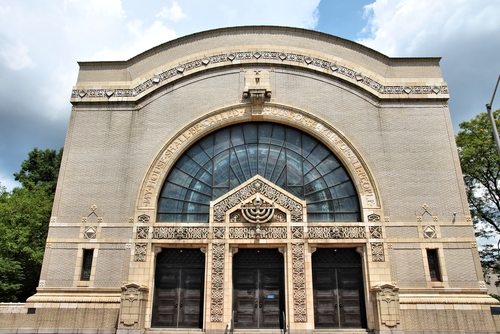
February 2, 2015; New York Times
In 2000, sociologist Robert Putnam published Bowling Alone: The Collapse and Revival of American Community, which spotlighted the decline in American social capital and the weakening of America’s social fabric in the last decades of the 20th century. Using organizational membership as his barometer, Putnam’s findings presented a strong challenge to the American Jewish community, which relied heavily on dues to develop and support its infrastructure, and was particularly threatening to synagogues of all denominations.
In a perfect storm of societal forces, two other elements combined to buffet American synagogues and threaten many congregations with economic ruin. The openness of American society had allowed Jews to deeply integrate into American life, but at the cost of a weakening sense of connection to the Jewish community and Jewish life, particularly among younger Jews. Additionally, the “Great Recession” forced many to question how they were spending scarce resources.
The UJA-Jewish Federation of Metropolitan New York studied 30 congregations that have implemented a new fiscal model and reported on their findings in a recently released study, “Are Voluntary Dues Right for Your Synagogue?” authored by Beryl P. Chernov, Debbie Joseph, and Rabbi Dan Judson. Each of the congregations in the study has replaced their required mandatory dues with what the authors have titled the “voluntary contribution” model, defined as follows:
- “Synagogue members and prospective members pledge a financial commitment of their own choosing, with guidance from the synagogue. Whatever members’ chosen commitment, they are considered to be members of the community without negotiation. There is no ‘dues relief’ or ‘abatement’ policy or process.”
- “Synagogue leaders endeavor to align this new financial model with all aspects of their synagogue culture, values, and practices. In all correspondence with their members regarding financial commitments, they make clear the covenantal nature of the system, its alignment with Jewish and synagogue values, and the fact that it is voluntary.”
As a result of implementing this change, congregations report an average increase in total revenues of four percent and an increase in synagogue members’ sense of congregational engagement, two critical measures of success.
Sign up for our free newsletters
Subscribe to NPQ's newsletters to have our top stories delivered directly to your inbox.
By signing up, you agree to our privacy policy and terms of use, and to receive messages from NPQ and our partners.
The implementation of a voluntary contribution model places the value of belonging and engagement in the life of the synagogue community at the forefront, replacing a reliance on social obligation. It demands that the congregation demonstrate its meaning and value to each member of its community, a demand that can be exciting or scary.
Rabbi Rick Jacobs, the president of the Union for Reform Judaism, described this shift as positive. He said, “Voluntary pledging is appealing not just for financial reasons, but also because it can shift the way synagogues are perceived. The bond that holds the Jewish people to one another is not primarily and fundamentally a financial arrangement, and when we suggest that it might be, it undermines everything we stand for.”
One congregation that tried the new model but returned to the old mandatory dues system reported that its congregants saw this new approach as unfair. “We had people with very similar uses of the temple, and very similar means, paying very dissimilar amounts.” But their executive director notes that no one “thinks that x years from now, a dues model is the wave of the future—it doesn’t seem like a very modern concept, and we discuss alternative structures all the time.”
Rabbi Judson, an expert on the history of financing of American synagogues teaching at the Hebrew College Rabbinical School in Massachusetts, said:
“The dues system has fallen out of alignment with the zeitgeist. People want to feel that whatever they want to give to a religious community should be valued as a gift. They don’t want to feel like they’re giving money and still it’s not good enough.”
The experience of the 30 congregations studied does not present a sure solution to the economic challenges faced by many synagogues. Changing longstanding frameworks is never easy. Standing pat is risky, as societal forces will continue to make mandatory membership seem out of step with modern American life and get in the way of the very personal and human connections that are at the heart of synagogue success. But giving up the security of a system that has been successful to try a new path is risky as well. There is no guarantee that a more voluntary approach will provide the resources needed to support the costs of synagogue life.
Making a judgment as to when it is time to change radically will be the question on synagogue board agendas in the coming years, and it will be interesting to see how this moment works out.—Marty Levine













